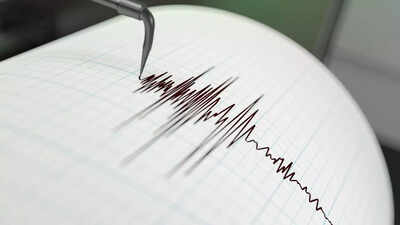ARTICLE AD BOX

Japan is intensifying its earthquake preparedness following a sudden spike in seismic activity in the Tokara Islands, where over 900 tremors have been recorded in the past eleven days.
The Japan Meteorological Agency confirmed a magnitude 5.5 earthquake on Wednesday. Though it caused no major damage, the sheer frequency of tremors has heightened public anxiety and renewed fears of a larger disaster.At the center of national concern is the Nankai Trough, an 800-kilometer fault off Japan’s southeastern coast where two tectonic plates converge. Historically, this region produces massive earthquakes every 100 to 200 years.
The last major rupture occurred in 1946. According to government experts, there is now a 75 to 82 percent chance that a magnitude 8 or higher earthquake will strike this area within the next 30 years.
Such an event would likely trigger a tsunami and cause widespread destruction.
New damage projections reveal scale of risk
In March, the Japanese government released updated projections based on current topographical and structural data. In a worst-case scenario, an earthquake in the Nankai Trough could kill up to 298,000 people and completely destroy 2.35 million buildings.
These figures slightly revise earlier projections made in 2014, which estimated 332,000 deaths and 2.5 million buildings lost. Despite the updated numbers being somewhat lower, the scale of risk remains among the highest ever recorded for a potential natural disaster.
Original safety goals not met
Following the 2011 Tōhoku earthquake and tsunami, which caused around 18,000 deaths and led to the Fukushima nuclear disaster, Japan introduced a national disaster prevention plan focused on the Nankai threat.
That plan, created in 2014, aimed to reduce potential deaths by 80 percent and cut building destruction by 50 percent within ten years. Those targets were not met by the 2024 deadline. Nevertheless, government officials say they are keeping the same targets in place, calling them aspirational goals that reflect the seriousness of the threat.In response to both the updated damage estimates and the recent surge in tremors, the central government is accelerating key measures.
These include expanding emergency evacuation shelters and reinforcing coastal sea walls in areas likely to be hit by tsunamis. During a recent cabinet meeting, Prime Minister Fumio Kishida emphasized the need for coordination between government agencies, local authorities, private companies, and non-profit organizations to ensure maximum protection of life and property.

Public anxiety fuelled by culture and speculation
Social media discussions and references in popular culture have added to the rising sense of concern.
A well-known manga has gained attention for predicting a major disaster on July 5, 2025. While the storyline is fictional and not backed by scientific evidence, the date has gone viral and is contributing to the current mood of unease, particularly in areas like the Tokara Islands that continue to experience repeated tremors.Japan experiences around 1,500 earthquakes every year, but the threat posed by the Nankai Trough is serious due to its potential for destruction. Thus the authorities in Japan are taking the threat seriously and increasing their level of disaster preparedness.



.png)
.png)
.png)
















 1 week ago
89
1 week ago
89









 English (US) ·
English (US) ·